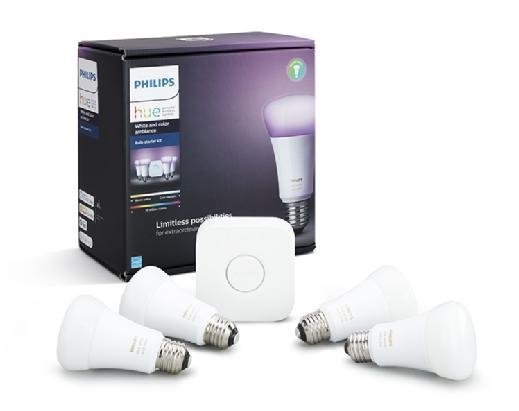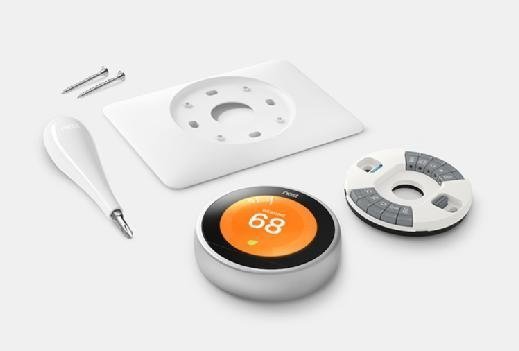A smart home is a residence that uses internet-connected devices to enable the remote monitoring and management of appliances and systems, such as lighting and heating via home automation.
Smart home technology, also often referred to as home automation or domotics (from the Latin “domus” meaning home), provides homeowners security, comfort, convenience and energy efficiency by allowing them to control smart devices, often by a smart home app on their smartphone or other networked device. A part of the internet of things (IoT), smart home systems and devices often operate together, sharing consumer usage data among themselves and automating actions based on the homeowners’ preferences.
Examples of smart home technologies
Nearly every aspect of life where technology has entered the domestic space (lightbulbs, dishwashers and so on) has seen the introduction of a smart home alternative:
- Smart TVs connect to the internet to access content through applications, such as on-demand video and music. Some smart TVs also include voice or gesture recognition.
- In addition to being able to be controlled remotely and customized, smart lighting systems, such as Hue from Philips Lighting Holding B.V., can detect when occupants are in the room and adjust lighting as needed. Smart lightbulbs can also regulate themselves based on daylight availability.
- Smart thermostats, such as Nest from Nest Labs Inc., come with integrated Wi-Fi, allowing users to schedule, monitor and remotely control home temperatures. These devices also learn homeowners’ behaviors and automatically modify settings to provide residents with maximum comfort and efficiency. Smart thermostats can also report energy use and remind users to change filters, among other things.
- Using smart locks and garage-door openers, users can grant or deny access to visitors. Smart locks can also detect when residents are near and unlock the doors for them.
- With smart security cameras, residents can monitor their homes when they are away or on vacation. Smart motion sensors are also able to identify the difference between residents, visitors, pets and burglars, and can notify authorities if suspicious behavior is detected.
- Pet care can be automated with connected feeders. Houseplants and lawns can be watered by way of connected timers.
- Kitchen appliances of all sorts are available, including smart coffee makers that can brew a fresh cup automatically at a programmed time; smart refrigerators that keep track of expiration dates, make shopping lists or even create recipes based on ingredients currently on hand; slower cookers and toasters; and, in the laundry room, washing machines and dryers.
- Household system monitors may, for example, sense an electric surge and turn off appliances or sense water failures or freezing pipes and turn off the water so the basement doesn’t flood, for example.

Smart home pros and cons
One of the most touted benefits of home automation is providing peace of mind to homeowners, allowing them to monitor their homes remotely, countering dangers such as a forgotten coffee maker left on or a front door left unlocked.
Domotics are also beneficial for the elderly, providing monitoring that can help seniors to remain at home comfortably and safely, rather than moving to a nursing home or requiring 24/7 home care.
Smart homes can accommodate user preferences for convenience. For example, user’s can program their garage door to open, the lights to go on, the fireplace to turn on and their favorite tunes to play upon their arrival.
Home automation also helps consumers improve efficiency. Instead of leaving the air conditioning on all day, a smart home system can learn behaviors and make sure the house is cooled down by the time homeowners arrive home from work. The same goes for appliances. With a smart irrigation system, the lawn will only be watered when needed and with the exact amount of water necessary. With home automation, energy, water and other resources are used more efficiently, which helps save both natural resources and money for the consumer.
However, home automation systems have struggled to become mainstream, in part due to their technical nature. A drawback of smart homes is their perceived complexity; some people have difficulty with technology or will give up on it with the first inconvenience. Smart home manufacturers and alliances are working on reducing complexity and improving the user experience to make it enjoyable and beneficial for users of all types and technical levels.
For home automation systems to be truly effective, devices must be interoperable regardless of manufacturer, and use the same protocol or, at least, complementary ones. As it is a relatively new market, there is no gold standard for home automation yet. However, standard alliances are partnering with manufacturers and protocols to ensure interoperability and a seamless user experience.
Another major issue is smart home security. A 2016 NTT Data Corp. report found that 80% of U.S. consumers are concerned about the security of their smart home data. If hackers are able to infiltrate a smart device, they could potentially turn off the lights and alarms and unlock the doors, leaving a home defenseless to a break-in. Further, hackers could potentially access the homeowner’s network, leading to worse attacks or data exfiltration. In October 2016, the Mirai IoT botnet was able to bring down parts of the internet in a series of distributed denial-of-service (DDoS) attacks using badly secured cameras, DVRs and routers as entry points.
In addition to home security, many smart home opponents worry about data privacy. The NTT Data report found 73% of consumers are concerned about the privacy of the data shared by their smart home devices. While smart home device and platform manufacturers may collect consumer data to better tailor their products or offer new and improved services to customers, trust and transparency are critical to manufacturers looking to gain new customers.
How smart homes work/smart home implementation
Newly built homes are often constructed with smart home infrastructure in place. Older homes, on the other hand, can be retrofitted with smart technologies. While many smart home systems still run on X10 or Insteon, Bluetooth and Wi-Fi have grown in popularity.
Zigbee and Z-Wave are two of the most common home automation communications protocols in use today. Both use mesh network technologies, short-range, low-power radio signals to connect smart home systems. Though both target the same smart home applications, Z-Wave has a range of 30 meters to Zigbee’s 10 meters, with Zigbee often perceived as the more complex of the two. Zigbee chips are available from multiple companies, while Z-Wave chips are only available from Sigma Designs.
A smart home is not a collection of disparate smart devices and appliances, but ones that work together to create a remotely controllable network. All devices are controlled by a master home automation controller, often called a smart home hub. The smart home hub is a hardware device that acts as the central point of the smart home system and is able to sense, process data and communicate wirelessly. It combines all of the disparate apps into a single smart home app that can be controlled remotely by homeowners. Examples of smart home hubs include Amazon Echo, Google Home, Insteon Hub Pro, Samsung SmartThings and Wink Hub.
Some smart home systems can be created from scratch, for example, using a Raspberry Pi or other prototyping board. Others can be purchased as a bundled smart home kit — also known as a smart home platform — that contains the pieces needed to start a home automation project.
In simple smart home scenarios, events can be timed or triggered. Timed events are based on a clock, for example, lowering the blinds at 6:00 p.m., while triggered events depend on actions in the automated system; for example, when the owner’s smartphone approaches the door, the smart lock unlocks and the smart lights go on.
Machine learning and artificial intelligence (AI) are becoming increasingly popular in smart home systems, allowing home automation applications to adapt to their environments. For example, voice-activated systems, such as Amazon Echo or Google Home, contain virtual assistants that learn and personalize the smart home to the residents’ preferences and patterns.

Smart buildings
While every smart home is a smart building, not every smart building is a smart home. Enterprise, commercial, industrial and residential buildings of all shapes and sizes — including offices, skyscrapers, apartment buildings, and multi-tenant offices and residences — are deploying IoT technologies to improve building efficiency, reduce energy costs and environmental impact, and ensure security, as well as improve occupant satisfaction.
Many of the same smart technologies used in the smart home are deployed in smart buildings, including lighting, energy, heating and air conditioning, and security and building access systems.
For example, a smart building can reduce energy costs using sensors that detect how many occupants are in a room. The temperature can automatically adjust, putting cool air on if sensors detect a full conference room, or turning the heat down if everyone in the office has gone home for the day.
Smart buildings can also connect to the smart grid. Here, smart building components and the electric grid can “talk” and “listen” to each other. With this technology, energy distribution can be managed efficiently, maintenance can be handled proactively and power outages can be responded to more quickly.
Beyond these benefits, smart buildings can provide building owners and managers the benefit of predictive maintenance. Janitors, for example, can refill restroom supplies when usage sensors monitor the soap or paper towel dispensers are low. Or maintenance and failures can be predicted on building refrigeration, elevators and lighting systems.
The origins of the smart home
With the 1975 release of X10, a communication protocol for home automation, the smart home, once a pipe dream a la The Jetsons, came to life. X10 sends 120 kHz radio frequency (RF) bursts of digital information onto a home’s existing electric wiring to programmable outlets or switches. These signals convey commands to corresponding devices, controlling how and when the devices operate. A transmitter could, for example, send a signal along the house’s electric wiring, telling a device to turn on at a specific time.https://www.youtube.com/embed/IC0mkHh7MaA
However, as electrical wiring isn’t designed to be free from radio-band “noise,” X10 was not always fully reliable. Signals would be lost and, in some cases, signals wouldn’t cross circuits that were wired on different polarities, created when 220-volt service is split into a pair of 100-volt feeds, as is common in the U.S. Additionally, X10 was initially a one-way technology, so while smart devices can take commands, they cannot send data back to a central network. Later, however, two-way X10 devices became available, albeit at a higher cost.

When home automation company Insteon came on the scene in 2005, it introduced technology that combined electric wiring with wireless signals. Other protocols, including Zigbee and Z-Wave, have since emerged to counter the problems prone to X10, though X10 remains a widely installed communications protocol to this day.
Nest Labs was founded in 2010 and released its first smart product, the Nest Learning Thermostat, in 2011. The company also created smart smoke/carbon monoxide detectors and security cameras. After being acquired by Google in 2015, it became a subsidiary of Alphabet Inc. in the same year.

In 2012, SmartThings Inc. launched a Kickstarter campaign, raising $1.2 million to fund its smart home system. Following additional funding, the company came on the market in August 2013 and was acquired by Samsung in 2014.
More recently, companies including Amazon, Apple and Google have released their own smart home products and domotics platforms, including Amazon Echo, Apple HomeKit and Google Home.

